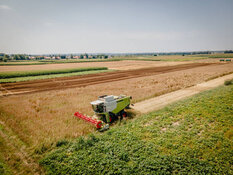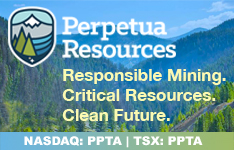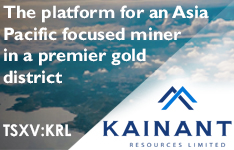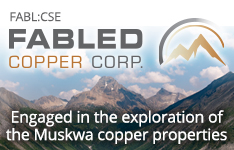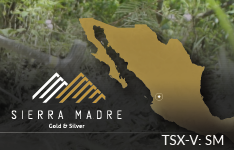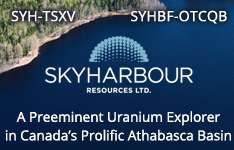Sage Potash Corp. (SAGE:TSX; SGPTF:OTC) engaged Connecticut-based investment bank, ACP Capital, to help it obtain funding for establishing a potash recovery pilot plant at its Sage Plains project in Utah's Paradox Basin, it announced in a news release.
Potash is a mineral used in potassium fertilizer and thus, essential to the agricultural industry, according to the U.S. Geological Survey.
"[ACP's] expertise and deep reach to knowledgeable agricultural investors and strategic partners will be key to creating a financial structure that leverages valuation at the project level," said Sage Potash CEO Peter Hogendoorn in the release.
Company Highlights
Sage Potash is working to become a prominent potash producer in the States, the release noted. Its Sage Plains project, in an area known to be rife with world-class potash resources according to the Utah Geological Survey, would help build a domestic supply chain and help the U.S. become potash self-sufficient. This is important because the country only produces 5% of its potash, importing the other 95%, primarily from Canada, data from Statista showed.
The Vancouver, British Columbia-based developer of a potash extracting operation has "potentially the largest deposit closest to production in the U.S.," according to an Investing News Network overview of the company.
The article indicated that to move Sage Plains forward, Sage Potash partnered with RESPEC, the engineering firm that planned and executed various projects worldwide, including K+S' potash solution mine and BHP's Jansen potash mine.
When up and running, Sage intends to mine for potash using sustainable methods that impact the environment less than previously employed techniques, the overview explained. The company will extract potash-rich brine in situ for solar or mechanical evaporation and granulation. To this end, Sage, in conjunction with RESPEC, is preparing an engineering plan for initially producing 150,000 tons of potash annually.
The Investing News Network piece also indicated Sage has a savvy management team with collective experience in the resource sector and in corporate management and finance. Hogendoorn, for instance, has 30 years of experience in financing public and private junior mining and tech companies and has been involved in acquiring and improving assets.
Pat Avery, the CEO of Sage Potash's U.S. operations, is also the director of Fertoz, an Australian phosphate company, and the owner of LDR Solution, a consulting firm for mining, chemical, fertilizer, project management and private equity companies.
A Mining Technology article published in June 2023 pointed out that Sage Potash's newly formed subsidiary Sage Lithium Corp. will eventually test for lithium and other minerals on Sage Potash's Utah land spanning almost 90,000 acres. Historical oil and gas wells there are said to have shown high concentrations of potassium, lithium and bromine.
Potash Hits Bottom
As far as the potash sector, the market should rally now that it has reached its nadir, said BMO Capital Markets equity research analyst Joel Jackson in an interview with BNN Bloomberg last week.
"The bottom is in for potash prices, and we're going to see good volume from here," he said.
One signal the market hit bottom, cited the analyst, is the deal earlier in the year between Capotex, a Canadian potash exporter, and China, for an amount below expectations and below Brazilian potash prices. Other signs, Jackson noted, include continually dropping spot prices, buying by all markets and demand catch-up taking place.
The Catalysts
Having secured water rights last month, Sage Potash may proceed to drilling at Sage Plains, according to management. Upcoming stock catalysts include receipt of the necessary drill permit, followed by drilling of a second exploration well.
Subsequent anticipated events are preparation of a mineral resource estimate and completion of a preliminary economic assessment.
Further out, plans call for start of pilot production and a feasibility study.
Technical Analyst Clive Maund asserted in a July 2023 report that Sage Potash's fundamentals were good and its stock price was in a favorable "extending base pattern."
"We therefore stay long, and the stock is rated a Buy again here," he wrote.
Overall, the experts indicated, now is an optimal time to invest in potash, and up and coming U.S. producer Sage Potash offers a way to capitalize on the anticipated sector upswing and to support future development of a domestic supply.
Ownership and Share Structure
SEDAR data as of Feb. 27, 2023 showed that Sage Potash's management and directors together own 63% of the company's total 48.3 million (48.3M) issued and outstanding shares.
As for institutional investors, Seamans Trust owns 3M shares, and Novadan owns 2M shares.
Currently, the potash explorer-developer has a CA$8.91 million market cap and is trading at about CA$0.17 per share (CA$0.17/share). This is down from its recent high of CA$0.195/share on Nov. 22, 2023. The price peaked in June at CA$0.44/share after the stock debuted on the TSX Venture Exchange in April of this year.


